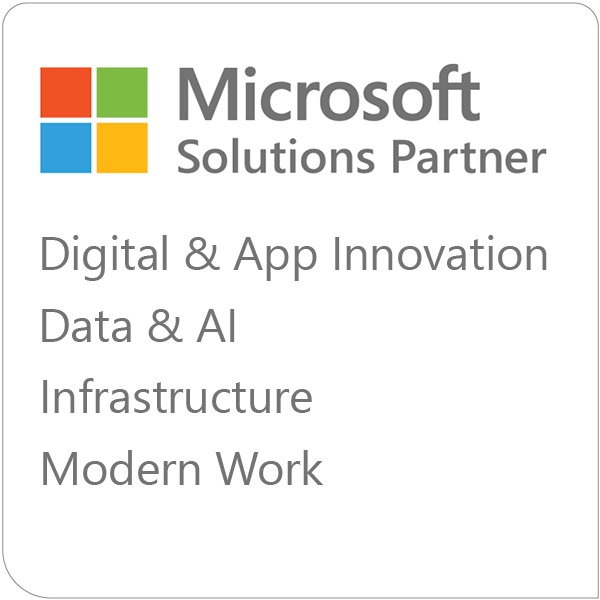In This Blog
Why Cloud Costs Sneak Up on You
I'm Jeremy Brewer, and I’ve been working with Microsoft Azure since around 2011. These days, I lead cloud architecture at Emergent Software, helping companies move to (and make the most of) Microsoft Azure.
A question I hear a lot is: “Why is our Azure bill so high?”
The short answer? It’s easy to overspend in the cloud if you’re not watching closely. It’s just the nature of the platform. You’ve got flexibility, endless features, and instant scalability... but if you treat Azure the same way you treated your old data center, you may run into some issues.
Three Common Ways Teams Overspend Without Realizing It
1. Set It and Forget It VMs (a.k.a. Wrong-Sizing)
I see this all the time: a virtual machine is set up with a certain size (say, 8 cores), and then no one ever checks back to see if it’s still needed, or if it could be smaller. Meanwhile, Microsoft rolls out newer, faster hardware, and suddenly the same job could be done with half the resources... but the VM keeps chugging along at full price.
Rule of thumb: If you haven’t reviewed your VM sizes in six months, it’s time.
Azure offers discounts if you commit to running a resource for a year or more. It’s like getting a deal on a lease...if you’re going to be using something long-term, why pay month-to-month?
For steady workloads (think SQL servers, domain controllers, app infrastructure), Reserved Instances can save you up to 60%. Savings Plans are more flexible and still offer a solid break.
Too many teams miss this step, and the savings can be significant.
3. Running Stuff That Doesn’t Need to Run
Old habits from the data center days die hard. Back then, we ran everything 24/7 because it was easier that way. In Azure, though, if a server is running and no one’s using it, you’re burning money.
For example, if your system only processes data once a day, why not spin it up just for that job and shut it back down automatically?
What makes this worse over time is what we call cloud sprawl: when you keep adding resources, enabling features, and spinning up new environments without taking anything away. It builds slowly, but before you know it, you’ve got dozens of underused assets contributing to your bill each month.
How Azure Actually Charges You
One reason cloud costs can feel confusing is because Azure bills based on usage, and usage can mean a lot of things.
Here’s a quick breakdown:
-
VMs: Billed by the minute (sometimes by the second), as long as they’re powered on.
-
Storage: Charged by how much you’re storing and how often you access it.
-
Apps & Functions: Based on executions and compute time.
Think of it like electricity: the more you run, the more you pay. But there are also times when you’re paying for just having something “plugged in,” like a hard drive sitting idle. Knowing the difference helps you make better decisions.
Better Tools = Better Visibility
Azure provides you with some solid tools to monitor and manage spend...you just have to make sure you use them.
-
Cost Analysis in the Azure portal transparently shows where your money’s going, across services, subscriptions, and timeframes.
-
Tags let you organize resources by department, app, or environment, so you can group costs logically.
-
Budgets & Alerts help you stay ahead of surprises before they hit your finance team.
For teams who want deeper insights, Power BI dashboards can pull in billing data for richer, more tailored reports.
The Real Value of Azure
Sometimes clients look at Azure pricing and compare it directly to buying new hardware. But that doesn’t tell the full story.
With Azure, you're not just paying for compute or storage. You're getting:
-
Automatic failover, redundancy, and backups
-
Built-in security that’s updated constantly
-
Global infrastructure and availability zones
-
A platform that evolves with you, not against you
And you’re no longer sending someone to a data center at 2AM to replace a dead drive. I’ve been there. It was exciting the first time...but once is enough.
Closing Thoughts
Optimizing your Azure costs is about spending smart.
I always tell clients: you don’t have to cut everything down to the bone. Sometimes spending a little more makes sense if it means better performance, tighter security, or less stress for your team. The key is knowing what you’re spending, why you're spending it, and whether there's a better way.
If you’re not sure where your Azure dollars are going, or if you're just starting your cloud journey, reach out. Helping people build smart, efficient cloud strategies is what we do every day.
FAQ
How can I tell if my VM is oversized?
Start by checking the performance metrics in Azure Monitor, specifically CPU and memory usage over time. If you’re consistently using less than, say, 40% of your allocated resources, that’s a red flag that you’re probably overprovisioned. It’s a bit like leasing a box truck to move a bicycle, it gets the job done, but you’re paying for way more capacity than you need. Azure’s hardware improves quickly, too. So even if your workload hasn’t changed, newer VM types might let you downsize without any performance loss.
Do I still pay for a VM when it’s shut off?
Yes and no. When a VM is deallocated (meaning fully shut down from within Azure, not just turned off inside the OS), you stop paying for the compute part, that’s the expensive piece. However, you’ll still pay for the attached resources like storage (disks, snapshots, etc.). So while it’s not “free,” it’s a lot cheaper than leaving the VM running 24/7. For dev/test environments or workloads that only run during business hours, this can add up to major savings.
What’s the first step I should take to save money in Azure?
The best starting point is a usage and performance review. Take a look at your highest-cost resources, usually your VMs, and evaluate whether they’re sized appropriately and being used efficiently. From there, check if any of them could benefit from Reserved Instances or Savings Plans. And finally, identify any workloads that can be scheduled to shut down when not in use. Most organizations are surprised by how much they can save just by making a few small changes.
Can I automate turning things off when they’re not in use?
Absolutely, and you should. Azure lets you schedule automatic start/stop times for VMs, which is perfect for things like dev/test environments that don’t need to be running overnight or on weekends. There are also options like VM scale sets and automation scripts using Logic Apps or Azure Functions. And for even easier management, especially with Azure Virtual Desktop, we often recommend Nerdio, which gives you a user-friendly way to scale desktops up or down based on actual usage.
Is it worth tagging all of my resources?
Yes, and the earlier you start, the better. Tags let you organize resources by project, department, environment, cost center, whatever breakdown makes sense for your business. When it comes time to understand where your Azure spend is going, having consistent tags in place makes reporting dramatically easier. It also helps with chargebacks or budget accountability if you have multiple teams or departments using shared infrastructure. Without tags, trying to piece together where your budget went is like sorting a box of receipts with no labels.
Why does Azure sometimes feel more expensive than on-prem?
This comes up a lot. On the surface, it can look like cloud costs more, especially if you just compare monthly bills to the one-time cost of new servers. But that comparison doesn’t tell the whole story. When you move to Azure, you’re not just buying infrastructure. You’re also getting built-in redundancy, backups, geographic distribution, security updates, and peace of mind. Plus, no more sending people to a data center in the middle of the night to swap a drive. Once you factor in all the intangibles, power, cooling, labor, hardware maintenance, the cloud often ends up being more cost-effective than it looks at first glance.






